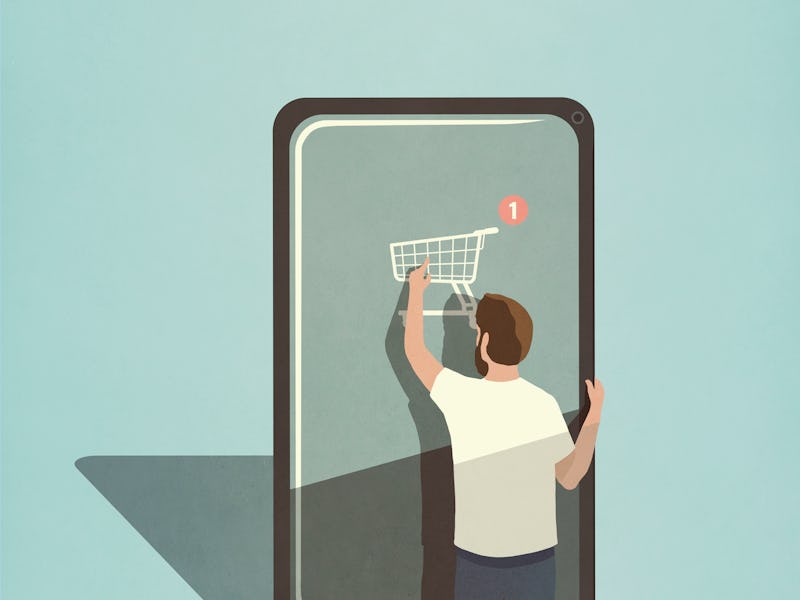What is the most eco-friendly way to shop? Counterintuitive study weighs in on online shopping
Where and how you shop may make a huge difference to your carbon footprint.

If you have ever wondered how much your online shopping habits contribute to climate change, a new study has the answer.
Using data from the United Kingdom, scientists evaluated the greenhouse gas emissions from three different ways of shopping to see which method has the heaviest carbon footprint.
The three kinds of shopping the study looked at include:
- Bricks and Clicks: Items bought online from a physical store, and then shipped to the buyer.
- Bricks and Mortar: Purchases made in a physical store directly.
- Pure Play: Items bought online from a non-store supplier, with orders filled by a package delivery company (in other words, giant warehouses).
The analysis includes the effect of transporting and storing the goods, delivery, and the packaging the wares come in.
The data reveal buying your shopping from retailers who rely on giant warehouses, Pure Play, has the heaviest environmental impact.
But surprisingly, buying online from a retail store, Bricks and Clicks, has the lowest carbon footprint. Bricks and Mortar fell in between the two online options, the study finds.
The difference buying online from real-store retailers was not trivial, either. Bricks and Clicks transactions were more eco-friendly than 63 percent of Bricks and Mortar purchases and 81 percent of Pure Play buys.
The results suggest just switching to buying online from the stores you love to visit may make a significant difference in your own carbon footprint.
Flow chart shows how products move from factory to consumer under three shopping methods. (Dashed lines indicate variables excluded from the study.)
A caveat: The study did not factor in the greenhouse gases emitted by buildings, employees, and the tech retailers rely on — like data centers and devices — for each type of shopping. Returns and lost packages were not factored in, either.
The study was published Wednesday in the journal Environmental Science & Technology.
Make shopping greener
The study focuses on “fast-moving consumer goods,” which means things like packaged foods, toiletries, cleaning supplies, and over-the-counter medicine. These kinds of products, traditionally purchased in-store, are now easy to buy online, thanks to e-tailers like Amazon and Jet. The conveniency of clicking and home delivery means more and more of us are turning to online-only stores to buy our most essential items.
But the new data reveal the inconvenient consequences of every click.
No matter how you shop, both vendors and shoppers can reduce their climate impact, the researchers say.
Two solutions identified in this study zoom in on transportation — both of you, and of the goods you buy.
If you choose to only shop in-store, then walking or biking there, instead of taking the car, cuts emissions by 40 percent, the study finds.
On the supply side, the delivery-only Pure Players could see a 26 percent drop in emissions by trading in delivery vans for electric cargo bikes.
Just switching up how you cover the "last mile" a purchase makes between the seller and customer may make all the difference, the researchers say.
Shoppers can also reduce their personal emissions by changing up their shopping habits in other ways. Try buying multiple products from the same supplier at one time and bundling them together, instead of shipping each item individually. Patience is also a virtue: Foregoing rush delivery may also make a difference, the researchers say.
Making these small changes may make online shopping a little less convenient, but think of it as taking one for the team — and that team is the future of humanity.
Abstract: Variability in consumer practices and choices is typically not addressed in comparisons of environmental impacts of traditional shopping and e-commerce. Here, we developed a stochastic model to quantify the variability in the greenhouse gas (GHG) footprints of product distribution and purchase of fast-moving consumer goods (FMCGs) via three prevalent retail channels in the United Kingdom (U.K.). We found that shopping via bricks and clicks (click and fulfillment via physical store delivery) most likely decreases the GHG footprints when substituting traditional shopping, while FMCGs purchased through pure players with parcel delivery often have higher GHG footprints compared to those purchased via traditional retail. The number of items purchased and the last-mile travel distance are the dominant contributors to the variability in the GHG footprints of all three retail channels. We further showed that substituting delivery vans with electric cargo bikes can lead to a GHG emission reduction of 26% via parcel delivery. Finally, we showed the differences in the “last mile” GHG footprint of traditional shopping in the U.K. compared to three other countries (China, Netherlands, and the United States), which are primarily caused by the different shares of modes of transport (walking and by car, bus, and bike).